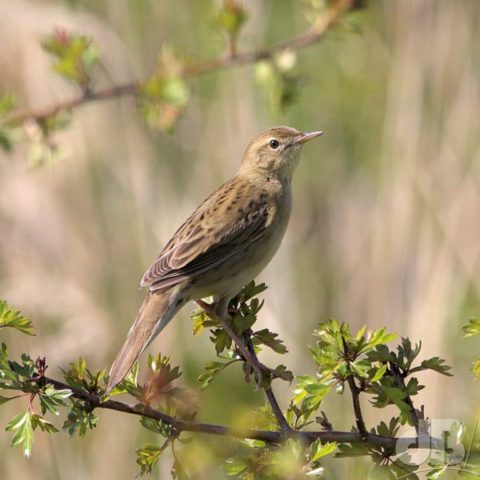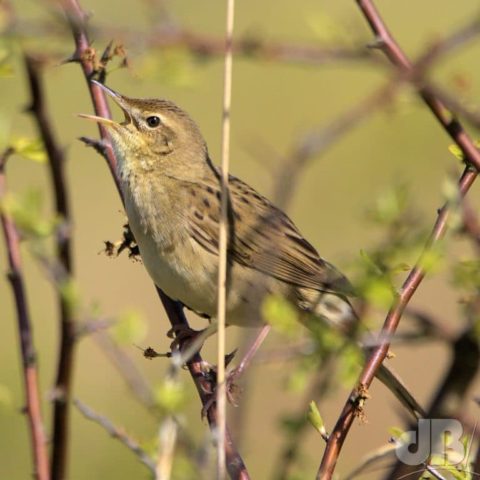I’m fairly sure I’d heard this relatively rare bird at RSPB Fowlmere several years ago but as a very, very amateur birder, I’d not seen one and certainly not seen one calling until this week. We took a trip to RSPB Titchwell on 2nd May 2021 and could hear one in the reed bed adjacent to the main footpath from the visitor centre, but didn’t catch a glimpse of the bird. A second visit in the week (5th May) and we could definitely hear the insect-like call of the bird and finally pinned it down to a patch of gorse and hawthorn not far from Patsy’s reedbed.

The Common Grasshopper Warbler is one of the grass warblers. (See What’s a Warbler, Anyway?). Given the name, one might assume that this bird dines on grasshoppers. But, that’s not the allusion of its name. Far from it. Rather the bird is so-called because its call is a constant monotonous trilling that sounds very much like the sound of a grasshopper. Here, have a listen to hear what I mean
The bird finds a safe perch, opens its bill and lets rip with its tuneless but rather delightful call. It’s quite difficult to pinpoint from exactly where the sound emanates, as is often the case with high-pitched bird calls. It’s almost as if the bird has some kind of ventriloquial skill. Nevertheless, we were lucky today and caught sight of it following an outburst as it weaved its way through spiny bushes to find its next perch.

There an estimated 16000 pairs in The British Isles and the bird is in the conservation red list as endangered. For comparison, there are 260,000 Sedge Warbler “territories”. The species can be seen across Europe from the west to Russia and Ukraine. It spends the northern winter in West Africa. The Locustella of the scientific name is the genus of which this species is the “type” naevia “translates” as spotted.